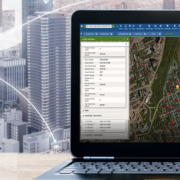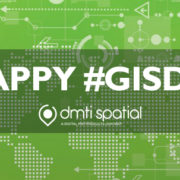Celebrating GIS Day
Did you know there is a GIS day to celebrate the impact of GIS technology around the globe? Today is GIS Day, and at DMTI Spatial we see this as a great opportunity to share our knowledge of the role Canada has played in the development of GIS as a technology that has shaped and changed our world in profound ways.
Today, 66% of enterprises rank GIS technology as critical or very important to revenue growth strategies, and many fundamental business practices–even elements of our national safety suc as assisting with emergency responsiveness and preparedness–rely on GIS technology.
What is GIS Day?
GIS Day started in 1999 as a movement launched by Esri to encourage people to learn and share knowledge about the widespread impact of GIS technology. The movement has grown over the years, and today GIS Day has a Facebook group with 18,000+ members!
GIS Day provides a forum and an opportunity for GIS experts to demonstrate the real-world applications of this amazing technology and how it makes a difference in our society. Every map has a story, and GIS Day is the time to celebrate those stories.
Canada and GIS Day
Canada’s history is rich in technological achievements, and is a pioneer in the development of GIS. Many of the methods and techniques used by GIS specialists throughout the world were developed or conceptualized by Canadians.
Here are some examples of how Canada has contributed GIS technological innovations:
- Dr. Larry Morley: Widely considered a remote sensing pioneer, Dr. Morley is remembered for starting the remote sensing program in Canada. He was the founding Chairman of the Canadian Remote Sensing Society in 1974, and in 2015 he was inducted into the Canadian Science and Engineering Hall of Fame.
- Dr. Roger Tomlinson: Known as the ‘father of GIS,’ Dr. Tomlinson worked for the Ottawa-based survey company Spartan Air Services. It was here that he conceptualized the idea of combining land use mapping with computer technology, and became central to the development and eventual applications of GIS technology.
- RADARSAT: This Canadian-based remote sensing Earth observation satellite is an advanced satellite system providing high quality, accurate images of the earth for a wide range of uses–one of which of course is integration with GIS technology.
- Geomatics: This fundamental GIS term was introduced by Michel Paradis, a French-Canadian surveyor, during a keynote address to the Canadian Institute of surveying in 1982. He argued that mapping tools would need to innovate alongside the pace of technology to truly address modern mapping needs. The phrase ‘geomatics’ became the accepted umbrella term for the tools related to mapping technologies.
GIS Technology in Canada Today
Many Canadian companies and scholars continue to push GIS technology forward, often with support of various government programs. Geospatial technology is critical to the functioning of many technologies people have become dependant on, including mapping applications, sensor technologies necessary for the Internet of Things (IoT), and Artificial Intelligence (AI).
The Canadian Geospatial Data Infrastructure (CGDI) is supported by the Canadian government, and is the source of “standards, policies, applications, and governance that facilitate the access, use, integration, and preservation of spatial data.” GeoConnections is another national program mandated to lead CGDI through the use of standards-based technologies and operation policies for data sharing and integration. This program is incredibly important, as it ensures that quality GIS technology is accessible to the people who need it.
DMTI is Canada’s Leading GIS Technology Provider!
Canadian people and companies will continue to make major contributions to the advancement of GIS technologies throughout the world. Here at DMTI we are proud contributors to Canada’s GIS past, present, and future.
Founded in 1994, we knew early on that the power of location could serve many business sectors including finance, insurance, telco, government, retail, and marketing. DMTI introduced CanMap, the first coast-to-coast digital street map in Canada! As GIS technology became more sophisticated, so did we, adding data to maps, finding unique and innovative ways to serve Canadian businesses.
Contact us today, and learn how DMTI Spatial can help your business grow!



